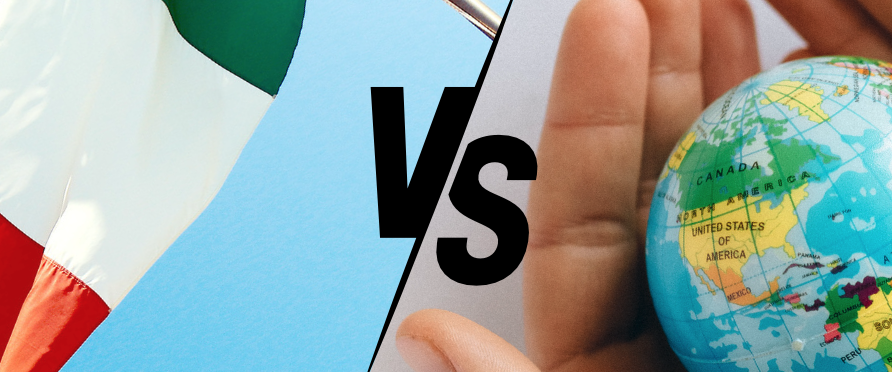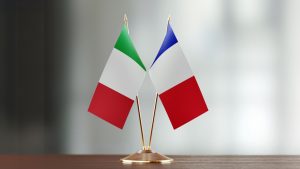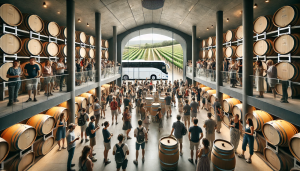In today’s wine landscape, wine tourism is no longer just a storytelling opportunity or a public relations activity—it is, in every respect, a strategic channel for building lasting, direct commercial relationships with high-value customers.
When a tourist visits a winery—especially if they’re coming from abroad—they experience much more than just a bottle of wine: they connect with a region, a story, and an identity. It’s precisely in that moment, during and immediately after the visit, that a crucial window opens to establish a strong commercial relationship. But for this to happen, more than a well-executed tour is needed: it requires a strategy designed to continue the conversation after the tasting.
One of the most significant insights from our data is the marked difference in value between local and international customers.

In the period observed from January to December 2024, data from the Direct from Italy Observatory clearly show how, when properly structured, wine tourism can become an extremely profitable direct sales channel.
The average ticket generated by an Italian visitor who chooses shipping over self-transport is €150—a significant figure on its own. However, this amount is nearly doubled by the purchasing behavior of international wine tourists, with an average ticket of €297 recorded on orders from 43 countries served through our infrastructure.
These numbers don’t simply reflect a different spending capacity—they highlight the value of an experience supported by a compliant, seamless, and customer-focused sales system.
It is precisely when the purchase involves shipping—whether within Italy or abroad—that the true commercial potential of wine tourism emerges: not in the bottle carried home in a suitcase, but in the case delivered to the customer’s doorstep a few days later, accompanied by proper documentation, trust, and lasting memories.
That’s why the moment of the visit should not be seen as the end of the journey, but as the beginning of a relationship. When the customer is satisfied, has already made a purchase, received it without issues, and enjoyed the experience, they become a highly valuable and loyal contact. At that point, however, you need to be ready—because letting them go would mean a double waste: both of immediate value and future potential.

The post-visit customer is an asset.
They are a potential ambassador for the winery in their home country—an evangelist who shares stories, recommends, and gifts bottles. But without a structured system in place to respond to their follow-up requests, we risk undoing all the work already done. We can no longer rely solely on traditional channels—horeca, importers, distributors—because today, true value lies in the direct relationship.
This is where D2C—Direct-to-Consumer—comes into play, as a model that allows wineries to maintain a human connection even at a distance, turning every purchase into a potential repurchase, every customer into a community, and every experience into a story that continues.
To achieve this, however, shipping alone is not enough—it must be done properly, in full compliance with the customs and tax regulations of each destination country, using the right tools and with clearly defined responsibility. We cannot assume that the carrier will handle the customs process “automatically.” The responsibility lies with the winery, and it must be managed with awareness.
And this is exactly where Direct from Italy makes the difference. We offer an integrated system capable of automatically generating the necessary customs and tax documentation for each shipment, ensuring legal, trackable, and compliant delivery. It’s not just a technical tool, but a commercial method designed to make direct international sales scalable and sustainable.
Wine tourism, interpreted this way, stops being just an emotional lever. It becomes a concrete, measurable, and replicable loyalty strategy—where every visit is an opportunity to build a connection, strengthen a relationship, and develop a new market.
And this is exactly where the future of Italian wine lies: not just at trade fairs or through consortia, but in the ability to sell well—directly and legally. And to do so at the right moment: when the emotion is still alive.




